
Earth
Organic Acre by Acre: Farmland Protection is a Promise for the Future
"Everybody needs beauty as well as bread, places to play in and pray in, where Nature may heal and cheer and give strength to body and soul alike."
- John Muir
Organic Valley farmers steward more than 400,000 organic farmland acres across the United States. Each region where we farm has distinct cultural and environmental qualities that shape the farming communities that produce the world’s best dairy, meat, and eggs. We think the world’s best is worth protecting now and for future generations. Where agriculture still thrives, 21st-century trends are threatening the viability of agriculture and rural life in every corner of the country.
One of these still-thriving agricultural regions is New York’s Tug Hill Plateau, or Tug Hill for short—a unique geographic region hugged by Lake Ontario to the west and the Adirondack Mountains to the east. Famous for its heavy winter snows, deep woodlands, rolling fields and farms cut by winding rivers and streams, Tug Hill communities are shaped by the land and its rich natural resources. Both of which are at stake as residential and commercial development, combined with a struggling agriculture economy, threaten this rural way of life.
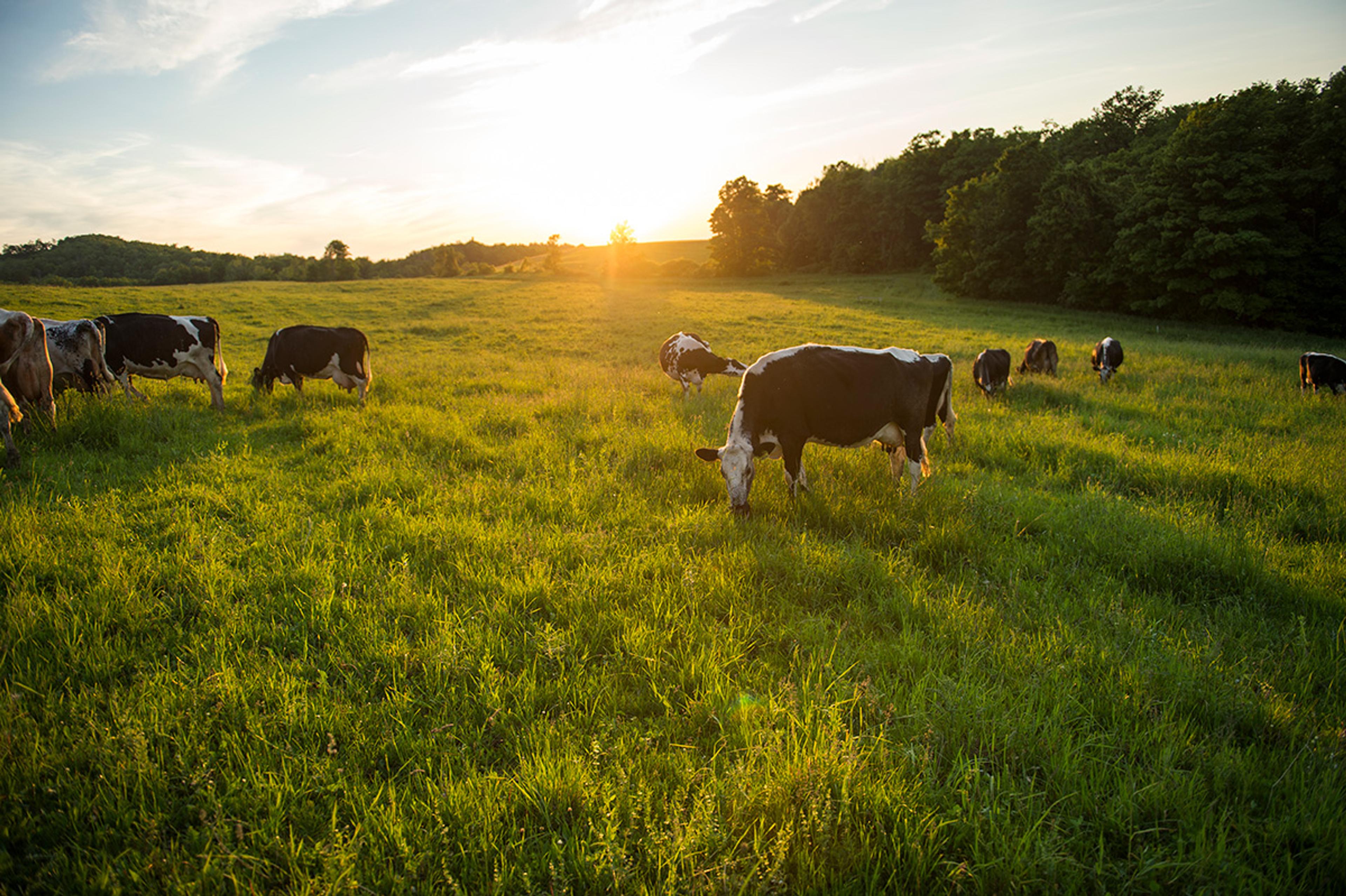
Hardy Family Farm, NY
In the heart of Tug Hill country, Douglas Morse and his family care for nearly 500 acres of certified organic farmland and dense woodlands made up of soft and hard maple, hemlock, ash, alder, beech, black cherry, and butternut. Skinner Stream, a tributary stream that empties into Lake Ontario, meanders through the property. Runs of chinook salmon and steelhead are known to spawn in Skinner Creek, making this a watershed of critical importance. The land is home to bobcat, snowshoe hare, red and gray fox, coyote, whitetail deer, fisher, pileated woodpecker, seasonal bald eagle, and a variety of bird species, both migratory and year-round residents.
“Our farm is relatively remote,” says Morse. “We can still walk our cows up and down the road from pasture to pasture. I can hear the wildlife when I’m in the fields and the coyotes howling in the fall when we move our cows in the early morning.”
To say the Morse farm is unique and worth protecting is an understatement. While the farm is not under imminent threat of development, Morse says he feels the pressure as other area farms are subdivided and sold, typically to buyers from more urban areas seeking refuge in scenic landscapes and quaint, friendly communities. “We want to do our part to keep agriculture viable here,” shares Morse. For this reason, and to ensure the generational transfer of the farm to the Morses’ children, Douglas is pursuing the permanent protection of his organic farmland.
The ecosystem benefits of his efforts are numerous: habitat for a wealth of native plants and wildlife, downstream water quality protection, carbon sequestration, and climate change mitigation. Social benefits include outdoor recreation and the preservation of the family farm model. This land provides the Morse family with a profitable way of life through maple syrup production and organic dairy farming all on a scale that fits within the footprint that the land provides. The Morse family farm is a fantastic example of humans working with nature.
Places like this are disappearing, and fast. Places like this deserve awareness so that they can be loved and endure for generations to come.
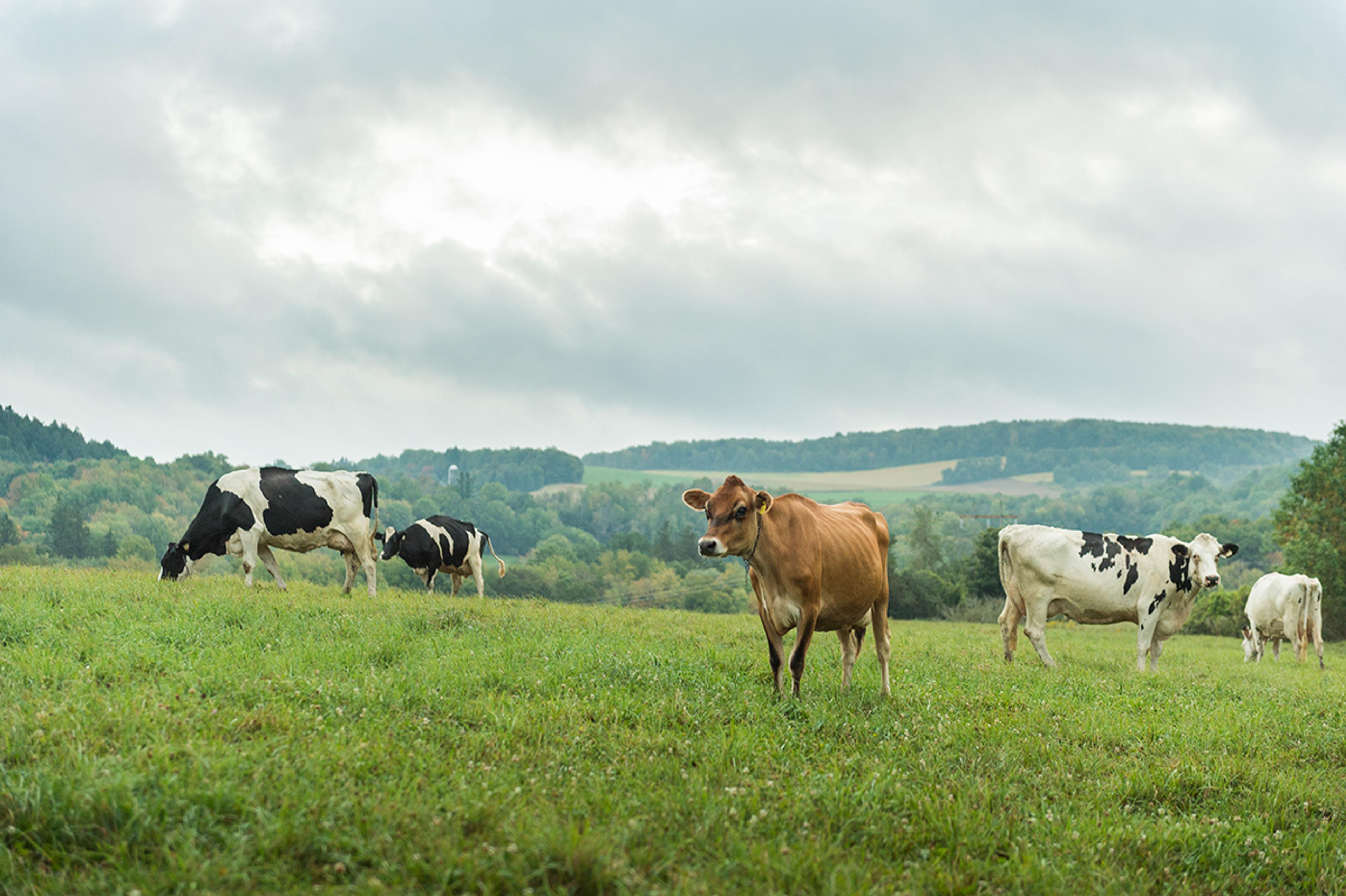
Miller Family Farm, NY
"We will not fight to save what we do not love."
- Stephen Jay Gould, evolutionary biologist and science historian
The Morse dairy farm is not your typical industrial, confinement dairy. As a farmer-owner of Organic Valley—the nation’s largest farmer-owned and certified organic dairy cooperative—the Morse family commits to farming the land in harmony with nature with no toxic synthetic chemicals, ever. They tend to a milking herd of 60 cows (the average Organic Valley dairy herd is 76 cows) who spend the grazing season outside on pasture benefitting from fresh air, sunshine, space to roam, and nutrient-rich grass—the right balance of which not only makes for the best quality milk, butter, and cheese on earth, but also nourishes the land, mitigates climate change, and preserves the rural character of our farming communities.
Milk like this can’t be produced just anywhere. Urban or rural, we all have a stake in this matter. We all benefit from agriculture done right, and we all benefit from preserving land that provides healthy, organic food for our children and their children for generations to come. This is the organic promise—so long as we protect it.
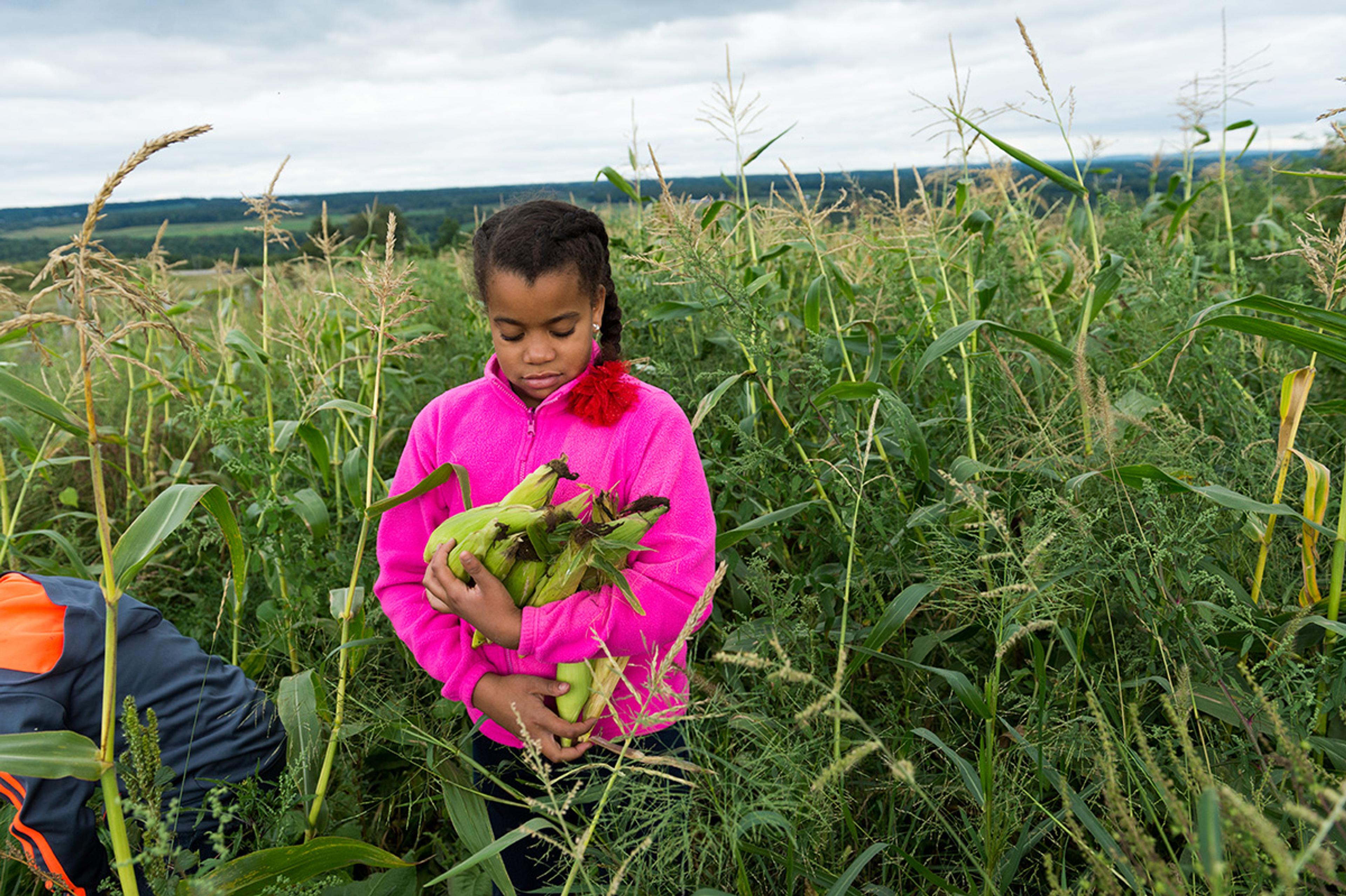
Benson Family Farm, NY
Farming for the Future
One way to ensure organic food endures is to permanently protect our most productive agricultural lands. For organic dairy, this specifically means protecting organic grazing and pasturelands. Grasslands and grazing lands make up more than two-thirds of all agricultural land in the United States, but only 3.5% (2.3 million acres) of the total grazing lands in the United States are certified organic.
The National Organic Program’s Organic Pasture Rule requires certified organic dairy producers to provide their animals with year-round access to the outdoors, and over the course of the grazing season, animals must get at least 30% of their diet from pasture. Organic Valley dairy farmers go above and beyond by allowing their cows to spend an average of 50% more time on pasture than the organic standard requires! On the Morse farm, a herd of 80 cows enjoys room to roam, graze, and get their required grass-fed diet from approximately 165 acres of pasture and hay land.
Sourcing additional grazing acres to purchase or lease is a challenge faced by many dairy producers across the country due to a combination of high land prices and a limited supply of available agricultural land. Because organic animals are required to spend so much more time outside, and because we have seen how much healthier cows are when they do, pursuing the permanent protection of organic grazing lands is critical to the future of organic dairy.
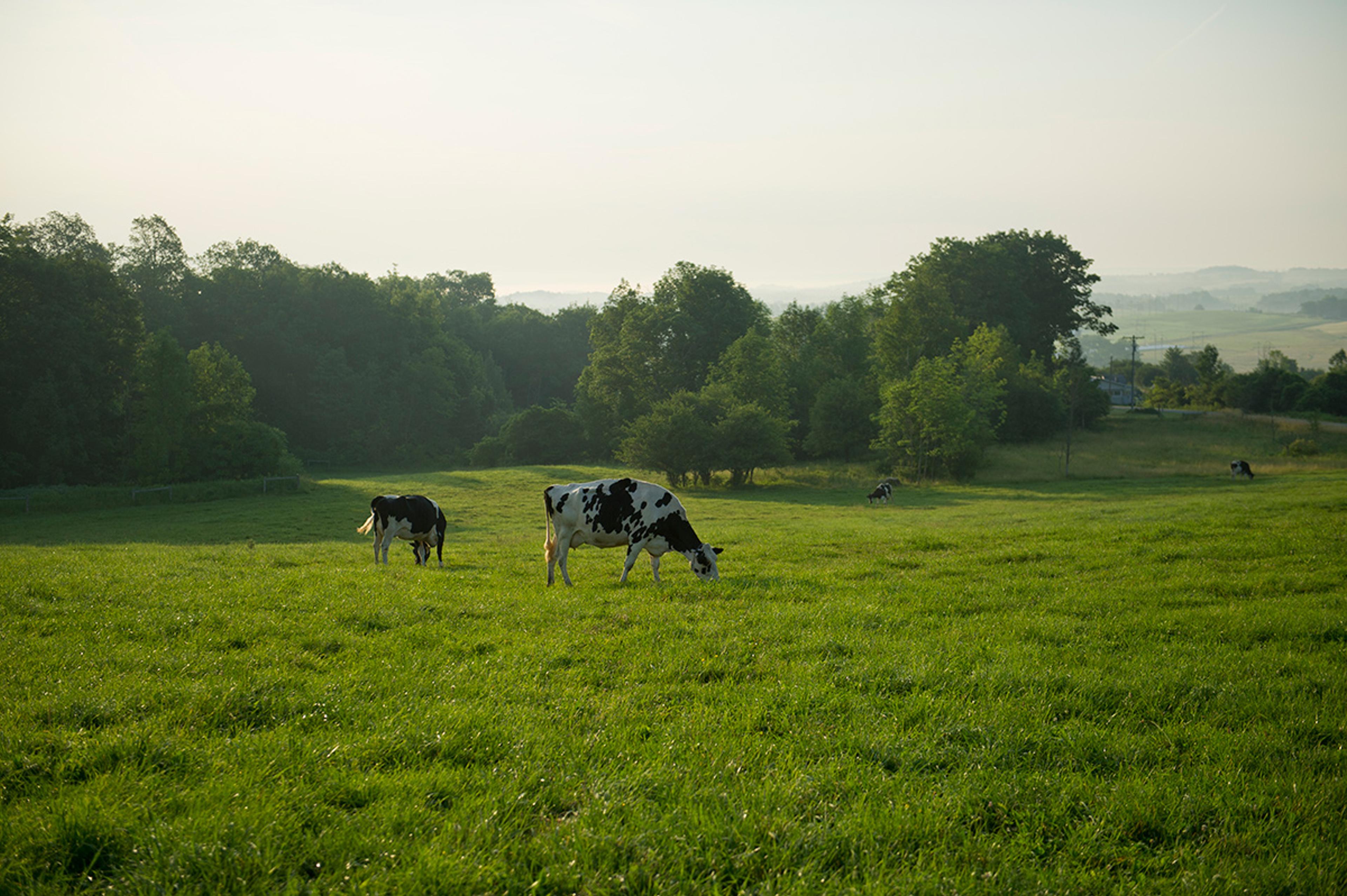
Hudyncia Family Farm, NY
Between 2001 and 2016, 11 million acres of farm and grazing land were converted to urban and highly developed use or low-density residential use. That’s equal to 2,000 acres a day paved over, built up, and converted to uses that threaten the future of agriculture. This is occurring in all 50 states—in your state and likely in your county.
In its “Farms Under Threat Report,” the American Farmland Trust cites a number of 21st-century trends that threaten food security, economic prosperity, and environmental quality. Some of these include poorly planned development, weakening agricultural viability, an aging farmer population, and climate change.
When we lose farmland, we lose access to food grown near the places where food is needed. Increasing dependency on food grown thousands of miles from where we live, and grown in ways that may threaten environmental and social health, leaves us all vulnerable, especially the next generation of eaters.
"To ensure a prosperous future, we must save our farmland."
- American Farmland Trust
Organic Valley farmers understand what is at risk when we lose even 1 acre of organic land. Once land is converted to non-agricultural uses, its ability to produce soil-based food is lost, forever. It’s especially tragic to lose organic land, which had years of a farmer’s time and thousands of dollars invested in transitioning it into organic.
From a land conservation perspective, organic agriculture is the gold-plus standard. It is uniquely positioned to be a win for the climate on two fronts: fewer inputs, and carbon sequestration. It requires fewer inputs and never allows the use of toxic chemicals, both of which result in fewer emissions; in fact, in Organic Valley’s 32-plus years, our farmers have kept nearly 400 million pounds of chemicals off our lands, out of our water, and out of our bodies! And organic farming can even potentially reduce atmospheric greenhouse gas emissions thanks to pasture-based practices that build soil health and store carbon. Although it’s tragic to lose any type of farmland, this intersection of providing safe, nutritious food and protecting our planet makes it even more vital to permanently protect organic farmland from development.
Climate Smart Farming at Organic Valley
Organic Valley’s five pillars of Climate Smart Farming include farmland protection. As our allies at American Farmland Trust say, “With every acre of farmland lost in the United States, we lose the opportunity to capture carbon and experience the other benefits of regenerative agriculture.” According to AFT studies, if the annual farmland loss was reduced by 80 percent in New York, that could be equivalent to removing 1 million cars from the road. Imagine that across all U.S. states!
"In New York alone, we’re working with 10 farms planning to permanently protect their farmland, and we have plans to scale up these efforts in other states in 2021."
- -
In this context, farmers like Douglas Morse are turning toward permanent farmland protection as a promise for the future. “Farmland protection offers us a tool to help preserve a way of life that is very important to me and to my family,” Morse says. Farmland protection can offer farmers a new income stream while also protecting the natural resources that support their farming operations for generations to come. Depending on location, farmland protection can pay farmers from $500 to $5,000 per acre of protected land. In areas where development pressure is extreme, the payment rates can be much higher.
To permanently protect one’s farmland, a landowner enters into an agreement with a qualified organization that manages agricultural conservation easements, such as a private land trust or a public farmland protection program. An agricultural conservation easement is a voluntary deed restriction designed to protect productive agricultural land from future subdivision, non-farm development, and other non-agricultural uses.
An agricultural conservation easement is permanent. If the land changes hands and is sold to a future owner, that owner—and any future owner—is required to maintain the easement.
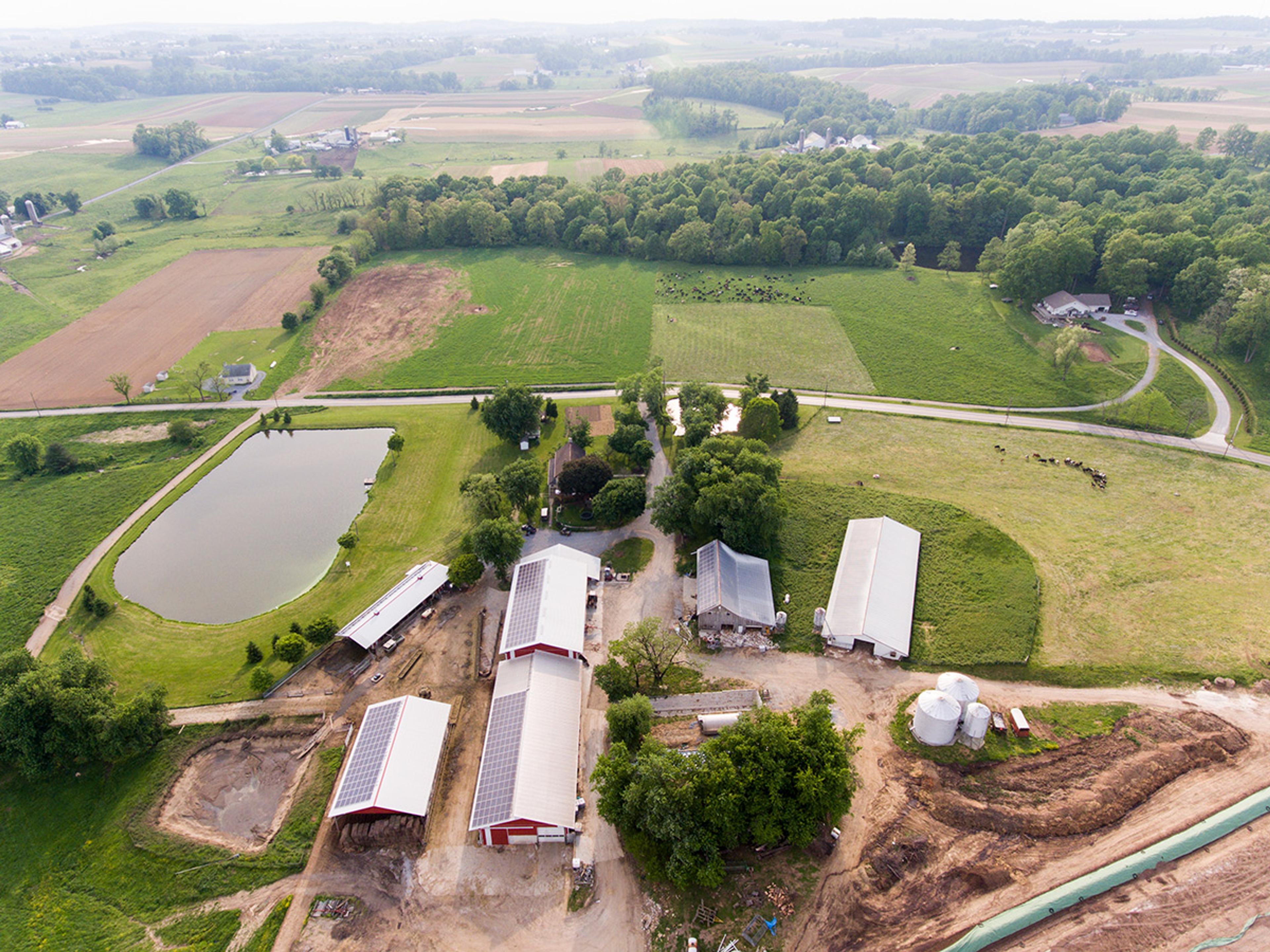
An aerial view of the Stolzfoos family farm in Pennsylvania. In the upper pasture, you can see how the farm divides their pasture into smaller areas. This intensive rotational grazing system makes cows graze ALL the grasses in a pasture evenly for balanced nutrtion, not just picking and choosing the sweetest treats and leaving the rest. The grazed portion is allowed to recover for several weeks before it is grazed again.
As a leader in organic agriculture, Organic Valley supports the protection of productive agricultural land to ensure that future generations of food-lovers will have access to organically grown milk, cheese, meat, produce, and more. We also understand the importance of farming for the future, of holding our business and the industry accountable for the bigger picture beyond profits.
We have a vision that includes viable, healthy communities and farm families, and lands that are conserved and protected for the prosperity of agriculture and diverse ecosystems like those that thrive on the Morse farm. This mission is why we offer assistance to our farmer-owners to help them along the road to farmland protection. In New York alone, we’re working with 10 farms planning to permanently protect their farmland, and we have plans to scale up these efforts in other states in 2021.
At Organic Valley, we strive for that nexus of conservation and sustainability where farmers like Douglas Morse can continue to live and farm in harmony with the land while maintaining a profitable business for his family and being a good neighbor in his community. Farm by farm, acre by acre, from our family to yours, we intend to bring you the world’s best food for generations to come.
Related Articles
 Earth
EarthSetting Down Roots for Waterway Restoration on Organic Valley Farms
Read moreby Elizabeth McMullen
Tags:
- climate,
- cooperative spirit,
- environment,
- land stewardship & conservation














